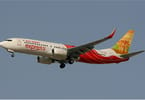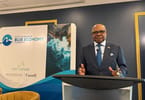by Carl Ribaudo, President and Chief Strategist, SMG Consulting
Destination marketers, flush with successes that often exceeded anyone’s expectations, now face a far more challenging task, one that may hold the industry’s very future.
Marketers need to convince travelers to change their behaviors to shift visitation away from peak periods such as weekends and major holidays. It’s not going to be an easy task, and its success will depend on a mix of education, marketing and technology.
Our firm, SMG Consulting of South Lake Tahoe, recently surveyed 1,000 consumers in Northern California to gather their thoughts about the challenges of travel during peak seasons.
The results hold lessons for destination marketers around the nation who find that traffic, congestion and crowding are becoming an issue — sometimes an issue that becomes politicized as the value of marketing is questioned when a destination’s streets, sidewalks and attractions already have become crowded.
The reasons for congestion will vary from location to location. In Northern California, strong economic growth in the past decade has boosted disposable income and driven tourism. We’ve seen rapid population growth. And the marketing funds generated by tourism business improvement districts — California has 110 of them — also have played a role.
No matter what forces are driving peak travel, consumers are well aware of increased crowding. Among the consumers we surveyed, 46 percent said they experienced significant crowding and congestion on their last visit to a destination in Northern California, and they said they spent an average of 1.9 hours — 1.9 hours! — stuck in traffic at some point during their visit.
In fact, consumers say they’re more likely to get stuck in traffic during a trip to a destination than they are during their day-to-day life. That’s an existential challenge to the tourism sector, which destinations often position themselves as an escape from the hassles of daily life.
Already, our survey found that more than 30 percent of visitors are reducing the frequency of their trips to destinations they perceive to be congested. More than 40 percent of consumers told us, meanwhile, that the negative feelings they take away from a visit to a crowded destination reduce the likelihood that they’ll make a return visit. That’s a hard blow to destinations that have worked hard to build repeat visits from devoted consumers.
Other popular destinations across the country, one would suspect, are hearing similar feedback from consumers.
As congestion increasingly plays a role in consumers’ perceptions, successful destinations urgently need to develop both short- and long-term answers to the issue.
There’s no single answer to the issues associated with crowding, but it’s imperative that destinations drive visitation to off-peak times — whether it’s midweek or off-season.
Destinations can move quickly to begin educational efforts, even if the results take a while to develop. They can educate travelers from nearby markets about the best times to arrive and depart to avoid the crunch of heavy traffic. If public transportation options are available, marketers can support their use. (We were mildly surprised to discover that 60 percent of consumers would consider use of public transportation to get around a destination if it’s easily available.)
Destination marketers can educate visitors to be stewards of the destination. Technology, too, will play a role. Successful destinations will work with technology partners to put more information into the hands of consumers and allow them to adjust their behaviors. Seventy percent of the consumers we surveyed, for instance, would use technology that told them about the drive time to a destination, the availability of parking or wait times at restaurants.
The best technology and the best educational programs will bring together all of the partners of a destination. Partnerships will develop unified messaging and keep the entire destination focused on management of key issues.
Honesty is critically important. Visitors will appreciate the knowledge that a midsummer Saturday is likely to be crowded, but the crowds are fewer on a Wednesday after Labor Day. Even more so, they’ll appreciate the care that the destination showed for them. Management of visitor expectations will play an ever-greater role.
Over the longer term, destinations need to ask themselves hard questions about their carrying capacity. How many visitors are too many? How can pricing decisions ensure that destinations don’t sink under the weight of their own success?
In a sector that historically gauged its success by growth in visitor numbers and occupancy rates, the shift in thinking to a business model that values sustainability undoubtedly be difficult. But it’s a task that must be done proactively to ensure a sustainable future for the tourism industry.

WHAT TO TAKE AWAY FROM THIS ARTICLE:
- The results hold lessons for destination marketers around the nation who find that traffic, congestion and crowding are becoming an issue — sometimes an issue that becomes politicized as the value of marketing is questioned when a destination's streets, sidewalks and attractions already have become crowded.
- Seventy percent of the consumers we surveyed, for instance, would use technology that told them about the drive time to a destination, the availability of parking or wait times at restaurants.
- Among the consumers we surveyed, 46 percent said they experienced significant crowding and congestion on their last visit to a destination in Northern California, and they said they spent an average of 1.























